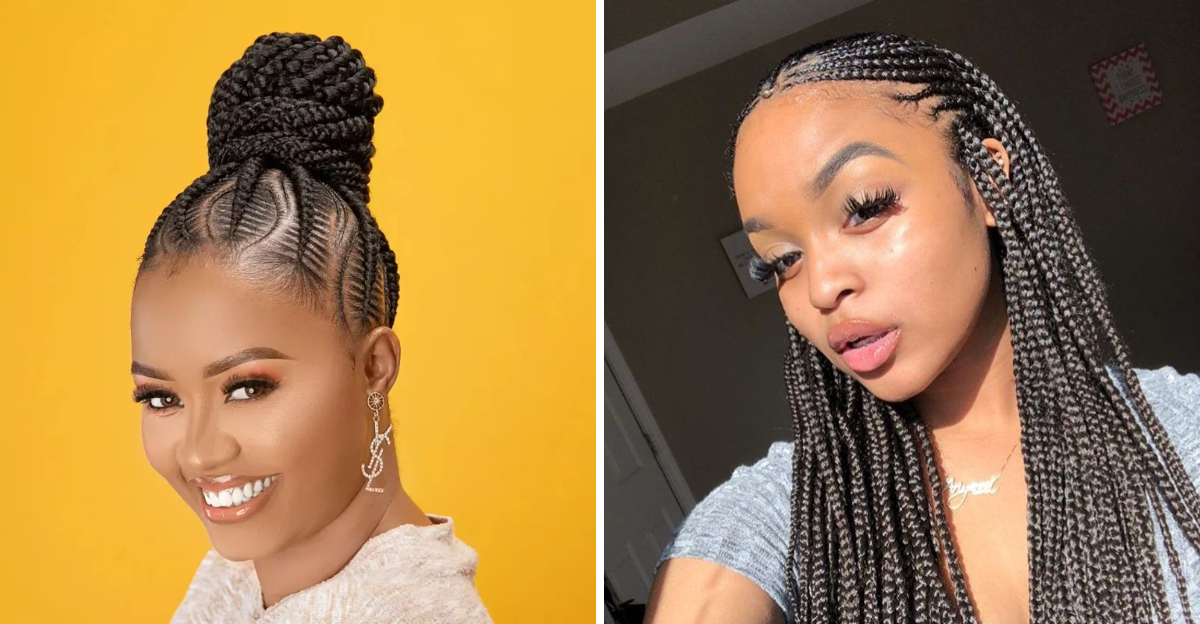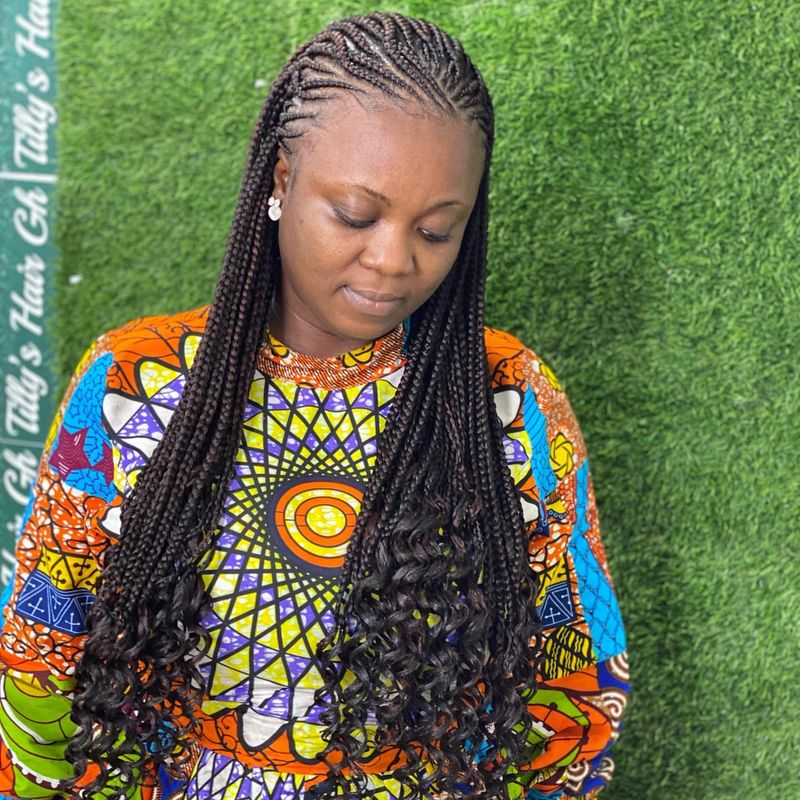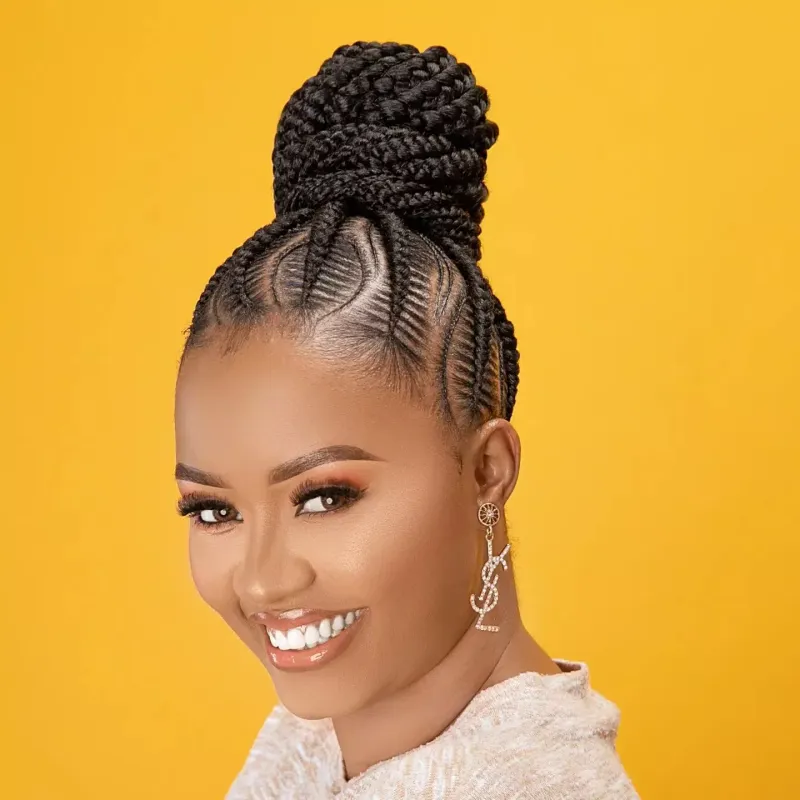Cornrows have been worn for centuries across different cultures, yet they remain misunderstood and often judged unfairly. These traditional braided hairstyles carry deep cultural significance but continue to face stereotypes in schools, workplaces, and society. Let’s unpack the outdated ideas and persistent myths that contribute to bias against this beautiful and meaningful hairstyle.
1. “Cornrows Are Unprofessional”
Many workplaces still consider cornrows too casual or “urban” for professional settings. This outdated view ignores the hairstyle’s cultural significance and practical benefits.
Black employees often face pressure to conform to Eurocentric beauty standards instead of wearing protective styles that actually maintain hair health.
2. “They’re Just a Trend”
Cornrows aren’t a passing fashion statement – they’re deeply rooted in African heritage dating back thousands of years. Archaeological evidence shows cornrow patterns in ancient sculptures from 3000 BCE!
Reducing this cultural practice to a temporary trend erases its rich historical importance.
3. “Only Black People Wear Cornrows”
While cornrows originated in Africa, various cultures worldwide have worn similar braided styles throughout history. Vikings, Greeks, and indigenous communities all developed braiding techniques.
The key difference lies in acknowledging origins while respecting cultural exchange versus appropriation without credit.
4. “Cornrows Are Gang-Related”
This harmful stereotype links a traditional hairstyle to criminal activity, perpetuating racial profiling. Media portrayals in the 80s and 90s reinforced this damaging association.
The reality? Cornrows are worn by people from all walks of life for cultural connection, protection, and style.
5. “Cornrows Are Messy or Unclean”
This misconception stems from ignorance about natural hair care. Properly maintained cornrows actually keep hair clean, protected, and organized.
The style reduces daily manipulation, prevents breakage, and can be washed regularly while maintaining the braided pattern.
6. “They’re Too Distracting in Schools”
School dress codes often target cornrows as “distracting” while allowing other hairstyles. This discrimination has led to students being sent home or forced to change their natural hair.
The CROWN Act now legally protects against hair discrimination in many states, recognizing these biases.
7. “Cornrows Damage Your Hair”
Contrary to this myth, cornrows are considered protective styles that shield natural hair from environmental damage, manipulation, and breakage. They allow hair to rest and grow.
When installed properly without excessive tension, cornrows promote hair health rather than harm it.
8. “All Cornrows Look the Same”
This misconception ignores the incredible artistry and variety in cornrow styling. From simple straight-backs to elaborate geometric patterns, cornrows offer endless creative possibilities.
Different regions in Africa developed distinct braiding patterns that told stories about identity, tribe, and social status.
9. “Cornrows Are Only for Women”
Historically, people of all genders wore cornrows across many African cultures. Men in ancient Egypt, warriors in various tribes, and kings all proudly displayed braided styles.
Today, male athletes, artists, and everyday men continue this tradition, challenging gender stereotypes about hair.
10. “They’re Too Time-Consuming to Be Practical”
While installation can take hours, cornrows typically last 2-8 weeks with proper care. This makes them incredibly time-efficient compared to daily styling of loose hair.
The time investment reflects cultural traditions where hair braiding served as a social bonding activity between generations.
11. “Appreciation vs. Appropriation Doesn’t Matter”
The difference between cultural appreciation and appropriation is crucial. Wearing cornrows without understanding their significance or crediting their origins dismisses centuries of cultural heritage.
True appreciation involves learning about the history, giving credit, and supporting Black stylists and businesses.
12. “Hair Discrimination Isn’t Real Racism”
Some dismiss hair discrimination as trivial compared to other forms of racism. This minimizes how hair bias impacts education, employment, and social acceptance for Black individuals.
Research shows Black women are 1.5 times more likely to be sent home from work because of their hair.
13. “Commenting on Black Hair Is Just Curiosity”
Unwanted touching or questioning of Black hairstyles isn’t innocent curiosity – it’s an invasion of personal space. Many Black people report strangers touching their cornrows without permission.
This behavior treats Black features as exotic curiosities rather than normal human variation.
14. “Historical Context Doesn’t Matter Today”
Some argue that historical discrimination against Black hairstyles is irrelevant now. This ignores how slaves were forced to cover their hair and how natural styles were legally banned in some places.
Understanding this history reveals why hair discrimination today isn’t just about aesthetics.
15. “Everyone Gets Criticized for Their Appearance”
While appearance-based judgment affects everyone, the systemic nature of bias against Black hairstyles creates unique barriers. Black children have been suspended from school specifically for wearing cornrows.
These aren’t isolated incidents but patterns of institutional discrimination based on racial features.
16. “It’s Just Hair – Why Make It Political?”
Hair has always been political for Black people who’ve been denied jobs, education, and opportunities based on their natural texture. The right to wear cornrows without penalty isn’t about politics – it’s about basic dignity.
When society penalizes cultural expression, it becomes inherently political.
17. “Cultural Styles Should Stay in Their Culture”
This segregationist view ignores how cultures naturally influence each other throughout history. The issue isn’t cultural exchange but rather power dynamics where dominant groups take from marginalized cultures without respect.
Respectful cultural exchange involves understanding, attribution, and mutual benefit.
18. “Black People Are Too Sensitive About Hair”
This dismissive claim ignores generations of trauma around hair discrimination. When your hairstyle can cost you a job, education, or social acceptance, concern isn’t “sensitivity” – it’s survival.
The emotional impact of hair discrimination is supported by psychological research on racial microaggressions.



















